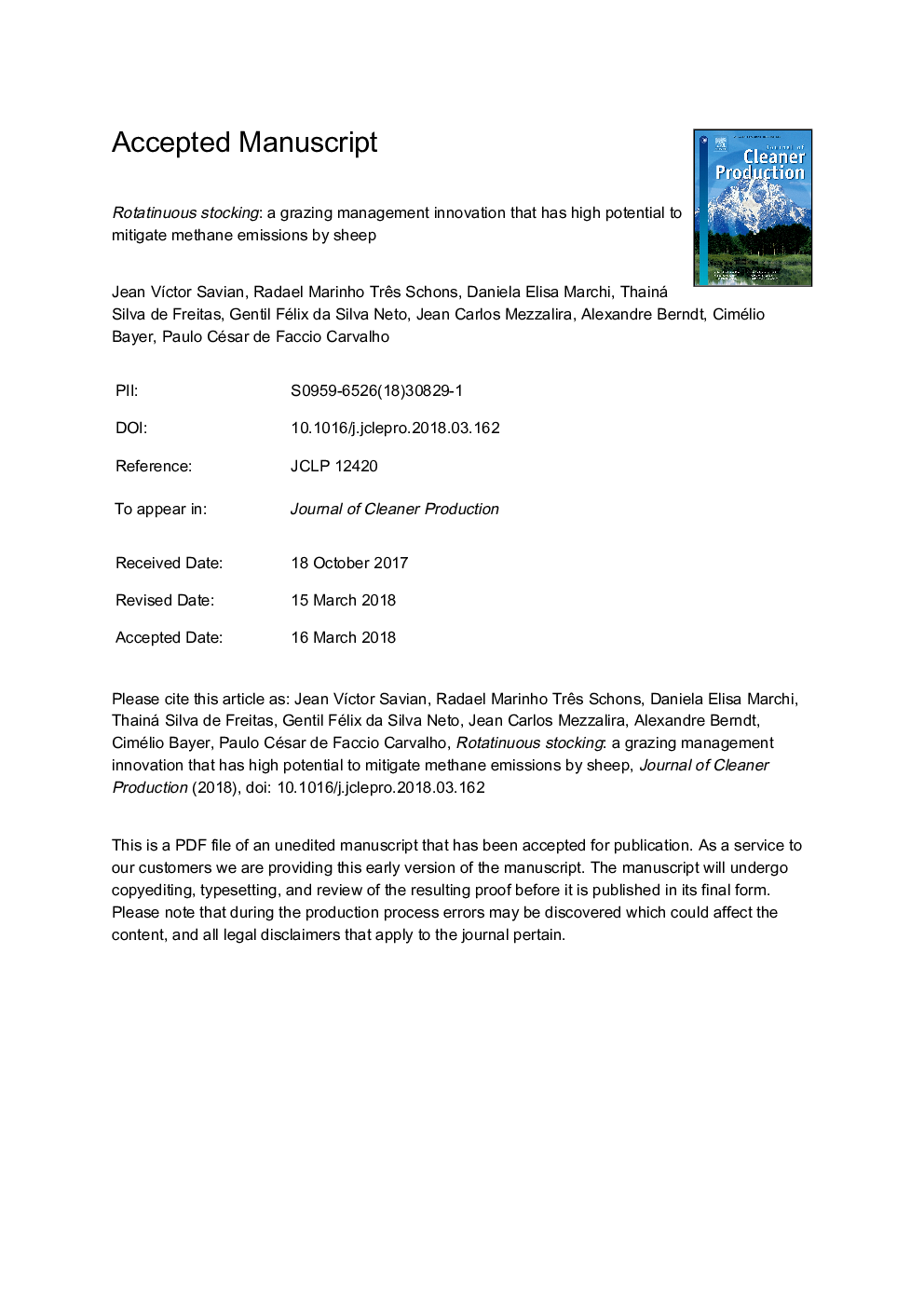| Article ID | Journal | Published Year | Pages | File Type |
|---|---|---|---|---|
| 8096248 | Journal of Cleaner Production | 2018 | 31 Pages |
Abstract
To test the hypothesis that the best sward structure in the grazing management strategy based on animal behaviour, called “Rotatinuous” stocking, results in higher nutrient intake and lower methane emission and intensity by sheep grazing Italian ryegrass pastures, two grazing management strategies were studied: the traditional rotational stocking (RT) with pre- and post-grazing sward target heights of 25 and 5â¯cm, respectively and, “Rotatinuous” stocking (RN) with pre- and post-grazing sward target heights of 18 and 11â¯cm, respectively. Male castrated sheep were used. The experiment was carried out in 2014 and 2015 in southern Brazil. The experimental design was a randomized complete block with four replicates. The RN treatment had better herbage chemical composition in terms of quality than that of the RT treatment, with greater (Pâ¯<â¯0.05) crude protein and lower neutral and acidic detergent fibre. The ideal sward structure and greater chemical composition of Italian ryegrass pastures found under RN treatment resulted in greater herbage digestibility and intake of organic matter and metabolizable energy by grazing sheep than under the RT treatment. Our study highlights that management is the key strategy to reduce the environmental impact of grazing through lower CH4 emissions in livestock grazing systems. “Rotatinuous” stocking was the more efficient grazing management strategy for mitigation of CH4 emissions and intensity by grazing sheep, with 64% less CH4 production per area and 170% less CH4 emission per unit of animal product when compared to the RT treatment.
Keywords
Related Topics
Physical Sciences and Engineering
Energy
Renewable Energy, Sustainability and the Environment
Authors
Jean VÃctor Savian, Radael Marinho Tres Schons, Daniela Elisa Marchi, Thainá Silva de Freitas, Gentil Félix da Silva Neto, Jean Carlos Mezzalira, Alexandre Berndt, Cimélio Bayer, Paulo César de Faccio Carvalho,
